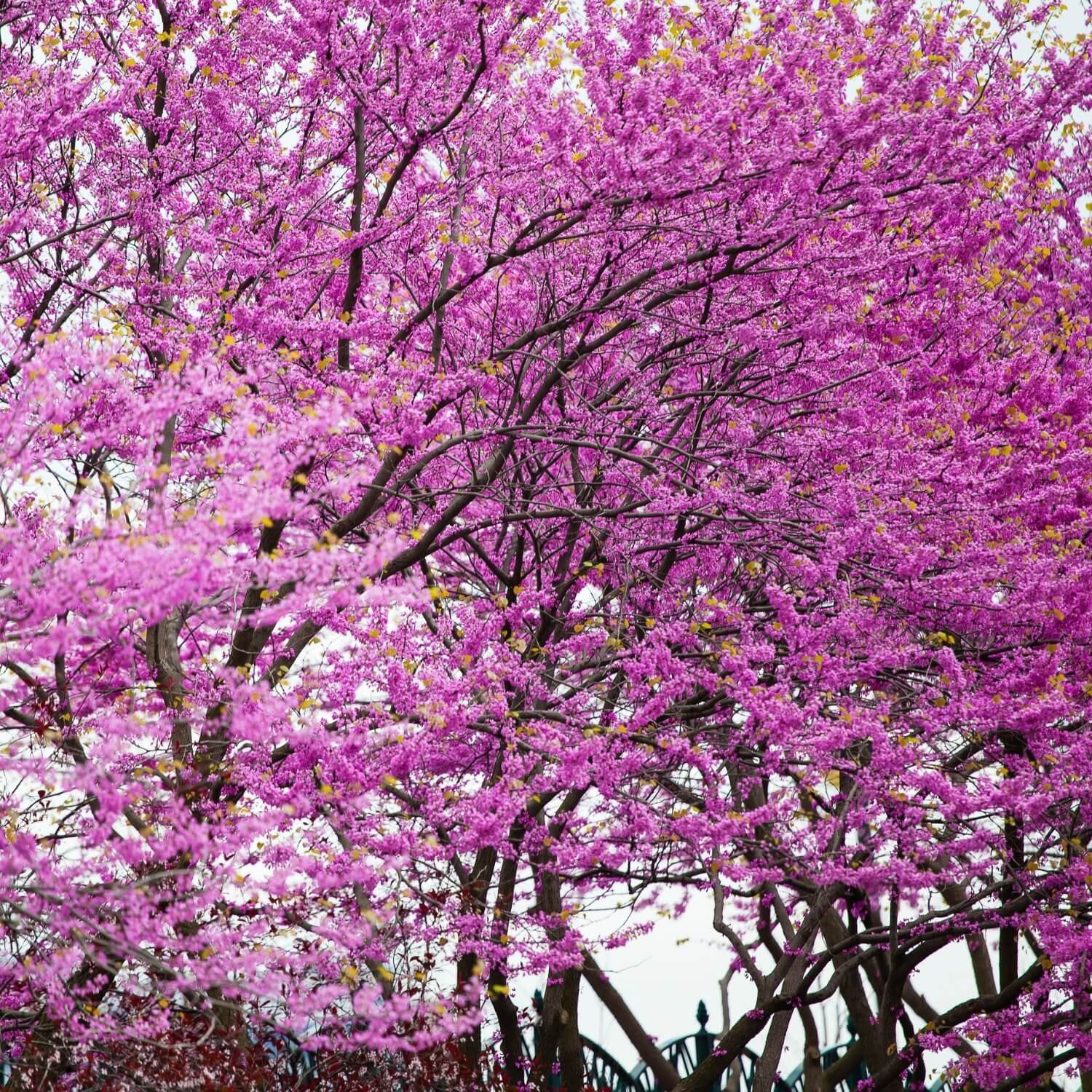Eastern Redbud

About
Known as the harbinger of Spring, the Eastern Redbud’s delicate blossoms and buds are one of the seasons most breathtaking displays. Spectacular rosy pink blossoms appear in dramatic fashion in April. But this tree’s beauty doesn’t end with its flowery show. It offers wonderfully colorful foliage year-round with reddish-brown leaves changing to dark green then to yellow in the Fall. In addition, its unique and irregular branching patterns combine with a trunk that commonly divides close to the ground to create a very handsome, spreading and often flat-topped crown. Even in Winter, covered with snow, the Eastern Redbud is stunning. This elegant species is a wonderful addition to any space.
Wildlife
The seeds are eaten by the northern bobwhite and a few songbirds, such as chickadees. The tree is also used for nesting sites and nesting materials and provides shelter for numerous birds and mammals.
History
Native to North America and Canada with cousins in Europe and Asia. First cultivated in 1811. The Spaniards noted Redbuds and made distinctions between the New World species and their cousins in the Mediterranean region in 1571.
Well-earned designation as the State tree of Oklahoma. George Washington reported in his diary on many occasions about the beauty of the tree and spent many hours in his garden transplanting seedlings obtained from the nearby forest.

About
Known as the harbinger of Spring, the Eastern Redbud’s delicate blossoms and buds are one of the seasons most breathtaking displays. Spectacular rosy pink blossoms appear in dramatic fashion in April. But this tree’s beauty doesn’t end with its flowery show. It offers wonderfully colorful foliage year-round with reddish-brown leaves changing to dark green then to yellow in the Fall. In addition, its unique and irregular branching patterns combine with a trunk that commonly divides close to the ground to create a very handsome, spreading and often flat-topped crown. Even in Winter, covered with snow, the Eastern Redbud is stunning. This elegant species is a wonderful addition to any space.
Wildlife
The seeds are eaten by the northern bobwhite and a few songbirds, such as chickadees. The tree is also used for nesting sites and nesting materials and provides shelter for numerous birds and mammals.
History
Native to North America and Canada with cousins in Europe and Asia. First cultivated in 1811. The Spaniards noted Redbuds and made distinctions between the New World species and their cousins in the Mediterranean region in 1571.
Well-earned designation as the State tree of Oklahoma. George Washington reported in his diary on many occasions about the beauty of the tree and spent many hours in his garden transplanting seedlings obtained from the nearby forest.
The Living Urn System with Eastern Redbud Seedling

About
Known as the harbinger of Spring, the Eastern Redbud’s delicate blossoms and buds are one of the seasons most breathtaking displays. Spectacular rosy pink blossoms appear in dramatic fashion in April. But this tree’s beauty doesn’t end with its flowery show. It offers wonderfully colorful foliage year-round with reddish-brown leaves changing to dark green then to yellow in the Fall. In addition, its unique and irregular branching patterns combine with a trunk that commonly divides close to the ground to create a very handsome, spreading and often flat-topped crown. Even in Winter, covered with snow, the Eastern Redbud is stunning. This elegant species is a wonderful addition to any space.
Wildlife
The seeds are eaten by the northern bobwhite and a few songbirds, such as chickadees. The tree is also used for nesting sites and nesting materials and provides shelter for numerous birds and mammals.
History
Native to North America and Canada with cousins in Europe and Asia. First cultivated in 1811. The Spaniards noted Redbuds and made distinctions between the New World species and their cousins in the Mediterranean region in 1571.
Well-earned designation as the State tree of Oklahoma. George Washington reported in his diary on many occasions about the beauty of the tree and spent many hours in his garden transplanting seedlings obtained from the nearby forest.
Unlike Evergreens, which we ship year-round, Seasonal trees are shipped in early to mid-Spring and again in early Fall and are sent according to your local climate and this year's weather. This is done to be sure your tree is planted at the optimal time. Also, to be sure that your seedling arrives in a strong and healthy condition, we need to ship Seasonals when they are dormant in the Spring and Fall. Send us an email to info@thelivingurn.com or call us at (800) 495-7022 with questions or for more information regarding the delivery date of your tree.


